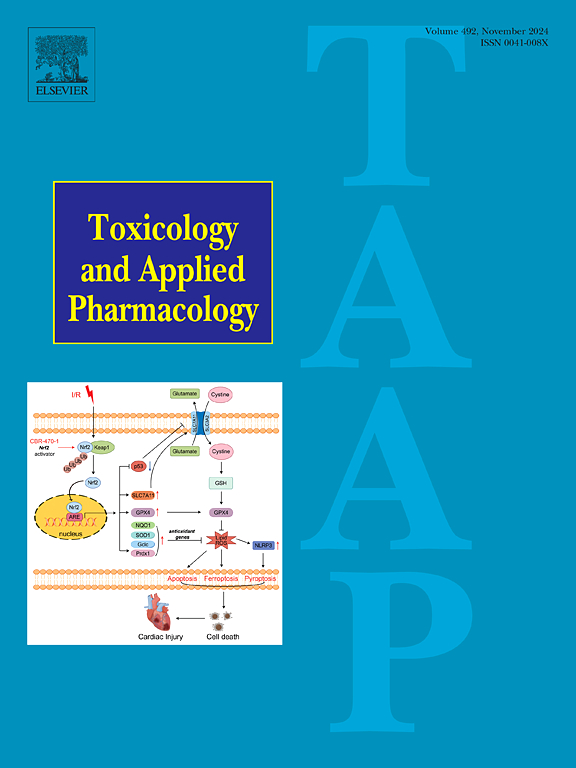Breaking the scar barrier: The anti-fibrotic and hemodynamic benefits of total salvianolic acid in hypertrophic scars
IF 3.3
3区 医学
Q2 PHARMACOLOGY & PHARMACY
引用次数: 0
Abstract
Hypertrophic scars (HS) affect up to 70 % of individuals following deep dermal injuries, burns, or surgical procedures, leading to significant functional impairments and psychological distress. Despite their high prevalence, effective therapeutic options remain limited, and the underlying pathophysiology is not fully elucidated. This study integrates network pharmacology, molecular docking, and in vivo experimentation to investigate the therapeutic potential of total salvianolic acid (TSA) from Salvia miltiorrhiza in HS treatment. A systematic pharmacology approach identified 186 target proteins, highlighting TGF-β1, Smad3, IL-2, and IL-4 as key modulators of fibrosis and inflammation. Molecular docking confirmed high-affinity interactions between TSA's active components and these targets. TSA significantly reduced scar elevation, fibrosis, and collagen deposition in a rabbit ear hypertrophic scar model, restoring tissue architecture and improving hemorheological parameters. Histological and immunohistochemical analyses confirmed TSA's ability to suppress TGF-β/Smad signaling, downregulate inflammatory cytokines and normalize collagen dynamics. These findings provide compelling evidence that TSA is a multi-targeted, pharmacologically active compound with promising anti-fibrotic and microcirculatory benefits, paving the way for novel therapeutic strategies in HS management. This study establishes a scientific foundation for TSA-based interventions, with potential clinical implications in regenerative medicine and scar therapy.

打破疤痕屏障:在肥厚性疤痕中,总丹酚酸的抗纤维化和血流动力学益处
肺肥厚性瘢痕(HS)影响多达70%的个体在深度皮肤损伤,烧伤或外科手术后,导致显著的功能障碍和心理困扰。尽管它们的患病率很高,但有效的治疗选择仍然有限,其潜在的病理生理学尚未完全阐明。本研究结合网络药理学、分子对接、体内实验等方法,探讨丹参总丹酚酸(TSA)对HS的治疗潜力。系统药理学方法鉴定了186个靶蛋白,强调TGF-β1、Smad3、IL-2和IL-4是纤维化和炎症的关键调节因子。分子对接证实了TSA活性成分与这些靶标之间的高亲和相互作用。在兔耳增生性瘢痕模型中,TSA可显著降低瘢痕升高、纤维化和胶原沉积,恢复组织结构并改善血液流变学参数。组织学和免疫组织化学分析证实了TSA能够抑制TGF-β/Smad信号,下调炎症细胞因子并使胶原动力学正常化。这些发现提供了令人信服的证据,证明TSA是一种多靶点、药理活性的化合物,具有抗纤维化和微循环益处,为HS管理的新治疗策略铺平了道路。本研究为基于tsa的干预奠定了科学基础,在再生医学和疤痕治疗方面具有潜在的临床意义。
本文章由计算机程序翻译,如有差异,请以英文原文为准。
求助全文
约1分钟内获得全文
求助全文
来源期刊
CiteScore
6.80
自引率
2.60%
发文量
309
审稿时长
32 days
期刊介绍:
Toxicology and Applied Pharmacology publishes original scientific research of relevance to animals or humans pertaining to the action of chemicals, drugs, or chemically-defined natural products.
Regular articles address mechanistic approaches to physiological, pharmacologic, biochemical, cellular, or molecular understanding of toxicologic/pathologic lesions and to methods used to describe these responses. Safety Science articles address outstanding state-of-the-art preclinical and human translational characterization of drug and chemical safety employing cutting-edge science. Highly significant Regulatory Safety Science articles will also be considered in this category. Papers concerned with alternatives to the use of experimental animals are encouraged.
Short articles report on high impact studies of broad interest to readers of TAAP that would benefit from rapid publication. These articles should contain no more than a combined total of four figures and tables. Authors should include in their cover letter the justification for consideration of their manuscript as a short article.

 求助内容:
求助内容: 应助结果提醒方式:
应助结果提醒方式:


